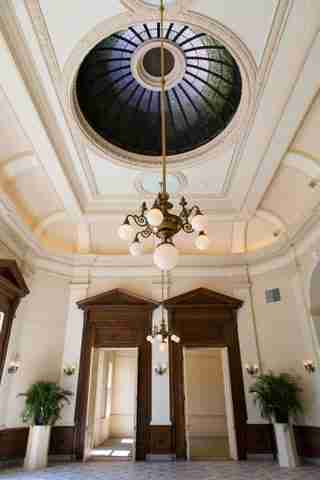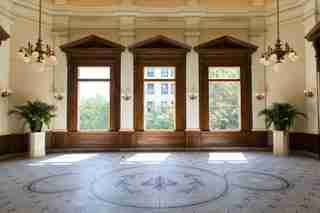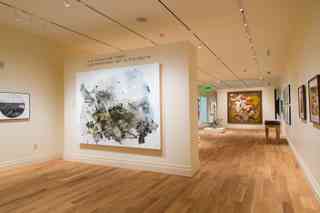The historic Gibbes Museum of Art in Charleston, South Carolina , reopened late last month following the $13.5 million overhaul of its stately 1905 Beaux Arts home—the South’s oldest museum building. Prior to closing in October 2014, the structure had undergone a long series of ill-suited alterations, but most of them were reversed in the latest update, which was overseen by the local firm Evans & Schmidt Architects. The team started with a total reconfiguration of the three-story institution (originally designed by Frank P. Milburn), turning the first floor back into artist studios and classrooms while expanding the galleries upstairs. (Staff offices were relocated across the street.) Original marble tile floors, hidden for years under linoleum and carpet, were uncovered, as were moldings that had been obscured by drop ceilings. Additionally, years of accumulated grit and grime were removed from the soaring, signature Tiffany-style glass dome and limestone façade.
The Gibbes has pledged six to eight special exhibitions per year as a way to enhance its archive, which features 10,000-plus objects spanning four centuries. “We try to do thematic things with our permanent collection so people can appreciate it more,” says Gibbes curator of exhibitions Pam Wall, who has organized four temporary exhibitions for the reopening. One of them, “The Things We Carry: Contemporary Art in the South,” showcases the work of a diverse group of 11 artists, all of whom have either won or been finalists for the annual 1858 Prize for Contemporary Southern Art. Wall describes the show, which was galvanized by the Emanuel AME Church massacre last June, as tackling the region’s complicated racial history with “direct and hard-hitting work.” It runs through October 9, as does “Beyond Catfish Row: The Art of Porgy & Bess,” a collection of works inspired by George Gershwin’s enduring 1934 opera.
While patrons must pay admission ($12 for adults) to access the second- and third-floor exhibition spaces, the first floor is free for the public to peruse. Previously housing a swath of cramped galleries, the floor now offers visitors the chance to watch artists-in-residence work in separate studios while also providing space for educational programs and lectures.
For a full list of upcoming programs and exhibitions, visit gibbesmuseumrg .

The 16-foot-wide Tiffany-style glass dome received a thorough cleaning.

Original marble-tile floors were stripped of linoleum and carpet.

“The Things We Carry: Contemporary Art in the South” explores the region’s complicated racial legacy, among other hot-button topics.
One of the artist-in-residence studios on the first floor.
The rear of the museum was also refreshed.
